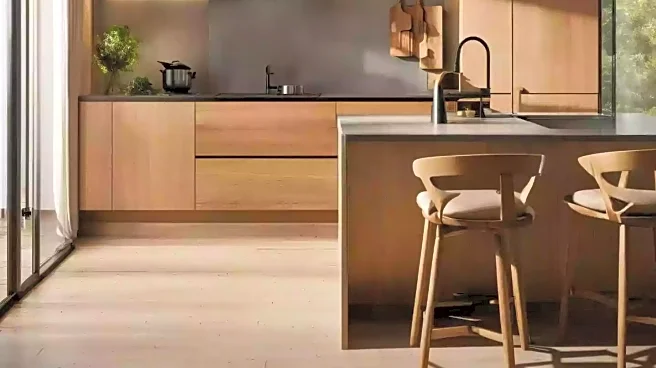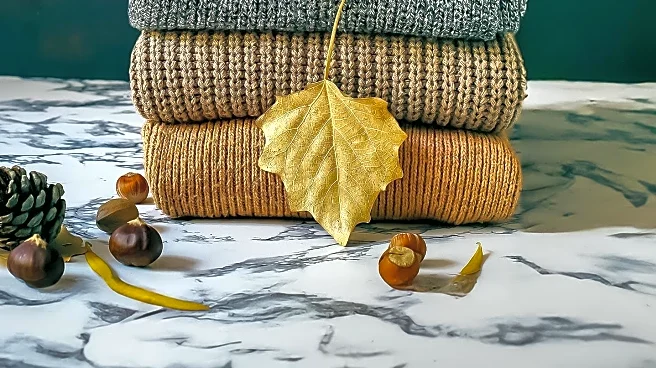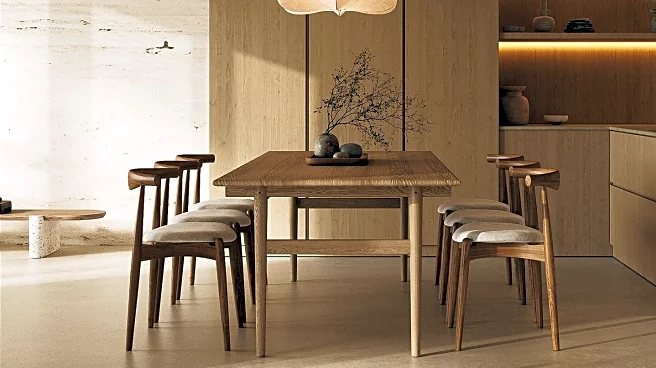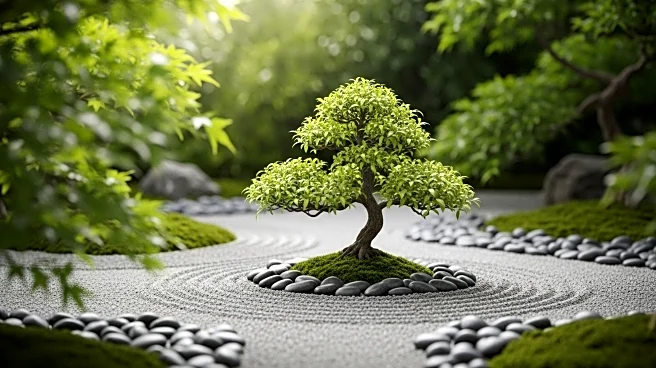What is the story about?
What's Happening?
Honey oak, a warm-toned wood popular in the 1990s, is experiencing a resurgence in home design. Designers are rebranding it as 'natural oak' to overcome negative associations with outdated aesthetics. This wood is being used in kitchens, floors, and furniture, appealing to those seeking a natural, spa-like feel in their homes. The trend reflects a shift towards materials that feel handmade and grounded, contrasting with the cool tones that dominated interiors during the Great Recession. Modern iterations of honey oak feature flat panels and matte finishes, offering a contemporary spin on traditional warmth.
Why It's Important?
The revival of honey oak signifies a broader trend in interior design towards warmer, more inviting spaces. This shift could influence consumer preferences and drive demand for natural materials, impacting industries related to home renovation and furniture manufacturing. As homeowners replace aging gray interiors, honey oak offers a durable and aesthetically pleasing alternative. The trend also highlights a cultural move towards embracing quality and longevity in home design, potentially affecting market dynamics and consumer spending patterns.
Beyond the Headlines
The resurgence of honey oak raises questions about sustainability and the use of natural resources in design. As consumers gravitate towards materials that offer a sense of quality and durability, there may be increased scrutiny on sourcing practices and environmental impact. Additionally, the trend reflects a cultural nostalgia for the 1990s, influencing not only design but also fashion and lifestyle choices. This could lead to a broader reevaluation of past styles and their relevance in contemporary settings.
AI Generated Content
Do you find this article useful?














